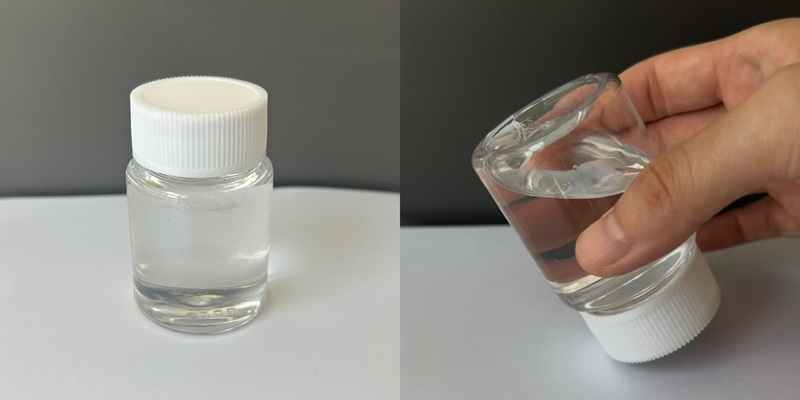Polyurethane catalysts play a vital role in the production of polyurethane materials, which are widely used in diverse industries due to their versatility and performance. These catalysts accelerate the chemical reaction between polyols and isocyanates to form polyurethane foams, coatings, elastomers, adhesives, and sealants. The choice of catalyst impacts not only the reaction rate but also the final properties of the polyurethane product, making it a crucial component in formulating high-quality foams.
Types of Polyurethane Catalysts
Polyurethane catalysts can be classified into two main categories: amine-based catalysts and metal-based catalysts.
- Amine Catalysts
Amine catalysts are widely used in polyurethane foam production. They promote both the blowing and gelling reactions. Some common amine catalysts include:- Tertiary amines: These promote the blowing reaction, which creates the foam’s cellular structure. Examples include MXC-37 (CAS 1704-62-7), which is used in ester-based stabilizer soft foams and microcellular foams.
- Blowing catalysts: These catalysts help control the foaming reaction, particularly when water is used as a co-blowing agent, as seen in MXC-R40.
- Trimerization catalysts: Specialized amine catalysts like MXC-TMA promote the trimerization of polyisocyanurates, which is key in the production of rigid foams with enhanced fire resistance.
- Metal Catalysts
Metal-based catalysts are typically used to enhance the gelling reaction, leading to better mechanical properties in foams. Common metal catalysts include:- Tin-based catalysts: MXC-T12, also known as dibutyltin dilaurate (CAS 1185-81-5), is widely used for its ability to improve tack-free time and mechanical properties in flexible and rigid foams.
- Non-tin alternatives: In response to environmental concerns, non-tin metal catalysts such as MXC-B20, a substitute for mercury and lead-based catalysts, have gained popularity. This catalyst is particularly suited for flexible and microcellular foam applications, providing delayed viscosity and excellent curing without harmful emissions.
Key Functions of Polyurethane Catalysts
Polyurethane catalysts primarily drive two reactions during foam formation: the blowing reaction and the gelling reaction.
- Blowing Reaction: This is the formation of gas bubbles within the reacting mixture, creating the foam’s open or closed cellular structure. Catalysts that accelerate the blowing reaction ensure proper expansion and cell formation.
- Gelling Reaction: This is the reaction between polyols and isocyanates, forming the polymer backbone of polyurethane. Metal catalysts like MXC-41 and MXC-15 are highly effective at promoting this reaction, leading to rigid and durable foam structures.
Applications of Polyurethane Catalysts
The specific formulation and type of polyurethane catalyst used can vary depending on the desired properties of the final foam product. Here are some common applications:
- Flexible Foams
Flexible polyurethane foams are used in furniture, mattresses, and automotive interiors. Catalysts like MXC-37 and MXC-R40 are designed to balance the blowing and gelling reactions, ensuring that the foam has the right resilience, softness, and durability. - Rigid Foams
Rigid polyurethane foams are used as thermal insulation in construction and appliances. Catalysts like MXC-15 and MXC-41 are ideal for creating foams with high structural integrity and excellent insulating properties, commonly used in spray foams and panels. - Specialty Foams
Certain polyurethane catalysts, like MXC-TMA, are used in the production of polyisocyanurate (PIR) foams. PIR foams have superior fire resistance and thermal stability, making them suitable for high-performance insulation applications. - Automotive Components
The automotive industry uses polyurethane foams in dashboards, seat cushions, and interior panels. Catalysts like MXC-T9, with its strong impact and low odor characteristics, are ideal for these applications.
Environmental and Regulatory Considerations
As environmental concerns grow, there is an increasing demand for low-emission, low-odor polyurethane catalysts. Emission-free catalysts such as MXC-37 and MXC-B20 are becoming more popular due to their ability to minimize volatile organic compound (VOC) emissions while maintaining high performance. Additionally, non-tin catalysts are gaining traction as regulatory bodies impose stricter guidelines on the use of heavy metals in foam production.
Conclusion
Polyurethane catalysts are the unsung heroes behind the performance and quality of polyurethane foams and other products. Their ability to control and optimize the reaction process is critical to ensuring that manufacturers meet industry demands for high-performance, durable, and environmentally friendly products. With ongoing advancements in catalyst technology, the polyurethane industry is poised for continued innovation and sustainability in the years to come.
Post time: Jan-15-2025


